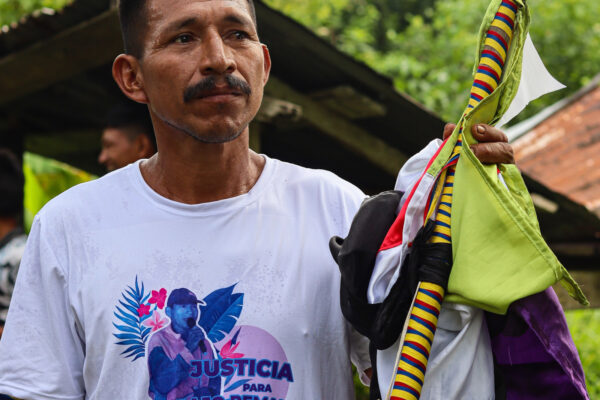Colombia’s national ombudsman has issued a stinging critique of a U.S.-funded drug-crop eradication campaign, saying that “indiscriminate” herbicide spraying had wiped out food crops across southern Colombia.
Human rights ombudsman Eduardo Cifuentes called for an immediate halt to all counternarcotics operations involving aerial herbicide spraying, saying that the U.S.-supplied technology being used was not distinguishing between legal and illegal cultivation.
Although the ombudsman is a government appointee, his recommendations are not binding and do not carry a government stamp of approval. His independent study does, however, call into question the intelligence used by the United States to target drug crops in a $1.3 billion U.S. counternarcotics program in Colombia.
A report by Mr. Cifuentes said, in effect, that while the Colombian government and the United Nations were substituting legal crops into southern Colombia in hopes of weaning farmers from dependence on drug- crop income, government military and police forces were using U.S. military aid to kill those same crops with herbicides.
The government says about 65,000 acres of coca, the plant that provides the base ingredient for cocaine, were destroyed during a six- week eradication campaign in December and January by U.S.- trained troops and police.
The ombudsman’s report, distributed on Tuesday, comes at a time of growing clamor throughout Colombia to suspend the use of military aircraft and troops to attack cocaine-production facilities in southern Colombia. The program is the central aspect of the U.S. aid provided to support Plan Colombia, a counternarcotics and crop- substitution program launched last year by President Andrés Pastrana.
Mr. Pastrana ordered a halt to the spraying campaign nearly two weeks ago as he was preparing for a landmark meeting with the head of the nation’s largest guerrilla group, the Revolutionary Armed Forces of Colombia, or FARC. The FARC has been among the chief opponents of the campaign, but U.S. and Colombian officials accuse the guerrillas of profiting from “war taxes” they collect from coca farmers and drug traffickers.
Mr. Cifuentes said that crops eradicated during the campaign included those planted under six separate alternative-development programs sponsored by the U.N. Development Program, European governments and the Colombian government itself.
Investigators from the ombudsman’s office, responding to complaints from farmers, were able to find damage inflicted on legal food crops in at least nine towns and villages targeted by government counternarcotics forces in southern Colombia.
In interviews before the report was released, police officials defended the herbicide-spraying campaign as virtually foolproof.
Gen. Gustavo Socha Salamanca, chief of the national counternarcotics police force, explained that the eradication program relies on U.S. satellite intelligence and other electronically gathered data, along with human intelligence obtained from aerial surveillance of areas under coca cultivation.
“It is said that the police have engaged in acts of indiscriminate spraying of legal crops. This is not true,” he said. “There is no possibility that our planes can spray over legal crops or populated zones.”













